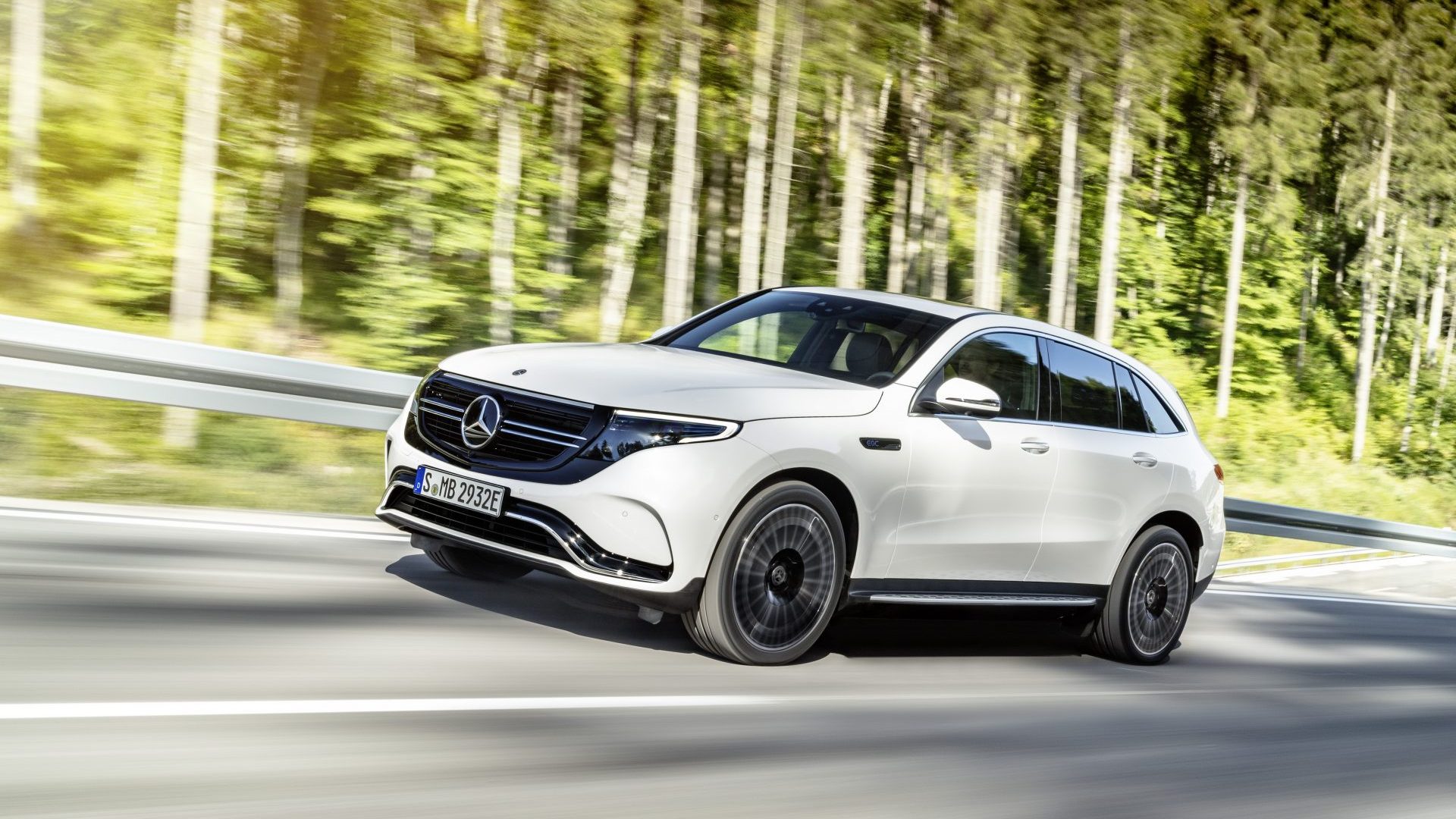

Year, Make, Model: 2020 Mercedes-Benz EQC
Topline: Mercedes-Benz revealed its first EQ-branded electric passenger vehicle, the EQC400 crossover due out in 2020, in Stockholm Tuesday.
What’s New: Of foremost importance is the EQC400’s powertrain. Its 4Matic all-wheel drive is propelled by two asynchronous electric motors, meaning the two are optimized for different uses. The front axle has a motor designed for efficient operation at low-to-medium load, primarily cruising, while the rear can turn a stomp of the accelerator into forward momentum. Together, the two make 402 horsepower and 564 pound-feet of torque, allowing zero-to-60 in 4.9 seconds and a top speed limited to 112 mph. Juice is held by an 80 kilowatt-hour battery, which Mercedes estimates to be able to give the EQC400 up to 200 miles of range. With 110-kilowatt fast-charging, this battery can charge from 10 to 80 percent in 40 minutes.

As one would expect of a technological showcase like the EQC, advancement isn’t limited to the drivetrain. Standard tech includes the company’s new MBUX infotainment and navigation system, controlled by voice and touch. Optional upgrades include seven varieties of bicolor alloy wheels in sizes ranging from 19 to 21 inches, one of which is part of an AMG-Line sport appearance package. An improved safety assist suite can be ordered, as can comfort options like the multimodal, 64-color ambient lighting system.
But the Mercedes-Benz EQC isn’t just about tech, it wears the EQ brand’s “Progressive Luxury” design language expected to manifest across the brand’s entire EQ lineup. LED strips connect the tops of both the taillights and headlights, and though the front bumper and grille are recognizably Mercedes, they do to a degree resemble offerings from other automakers, notably last-generation Ford Explorers.

Quotable: “With the EQC—the first fully electric SUV from Mercedes-Benz—we are flipping the switch,” explained Daimler Chairman and Mercedes CEO Dieter Zetsche in the automaker’s press release. “Electric drive is a major component in the mobility of the future. We are therefore investing more than ten billion euros in the expansion of our EQ model portfolio, and more than one billion euros in global battery production.”

What You Need to Know: As a demonstration of Daimler’s electric powertrain technology as of this point in time, the EQC does a lot to establish the maturity of Daimler’s tech. Daimler itself identifies the EQC400’s immediate competitors such as the Audi e-Tron and Jaguar I-Pace, though the upcoming Tesla Model Y compact crossover is also worthy of mention because of its status as a compact electric crossover. Jaguar’s product arrives on the market later this year, Audi’s in early 2019, but Mercedes doesn’t promise EQCs until 2020, which is shortly after Tesla is reported to be planning the launch of its own electric CUV.
Unfortunately for Mercedes, its EQC400 has an (almost certainly conservative) estimated range of just 200 miles from its 80 kWh battery, while the I-Pace does 240 miles from 90 kWh, and the e-Tron 249 miles from a similar battery. Tesla’s Model Y is expected to be Model 3-based, and because the Model 3 Performance is advertised as having 310 miles of range from 75 kWh, it seems possible for the Model Y to approach that range despite a presumably higher curb weight and less aerodynamic body.
The EQC400 fits right in with what Daimler’s trademarks told us to expect of the EQC, also suggesting an EQC450 is in the works. It’s presumptuous to say the currently-hypothetical EQC450 would have proportionally more range to fit its larger powertrain-designating numerical suffix, as it could instead be about performance (the EQC400 has about 400 horsepower), but we can’t count out the possibility just yet.
The Drive has contacted Daimler for additional information on its plans for the EQ brand and the EQC, and we will update when we receive a response.